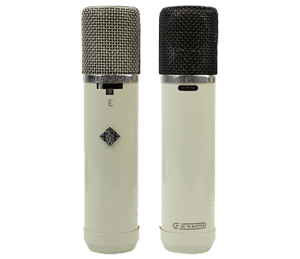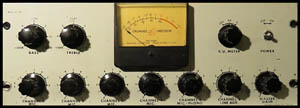Equipment – Intro (Page 1 of 3)

Vacuum Tube Equipment By Greg Sage
In the 1970’s I had the need to design my own equipment for musical needs.
Good recording equipment was way out of my price range and hard to come by.
I had a pair of 1960’s tube “Telefunken ELA M 251 E” condenser microphones.
They were the most musical sounding mic’s ever made.
I bought them in mint shape for almost nothing from a studio that
thought that newer solid state microphones would be better.

My problem was that I had nothing of equal quality to use them with.
I had worked with old vacuum tube equipment since I was in 5th grade and
loved the sound it produced, but my knowledge of electronics was minimal.
For a decade I studied tube gear I thought sounded good and by 1979 I
started building my own circuits from scratch.
By 1980 most people thought tube gear was dated, and that solid
state was better, but to me the proof was always in the sound.
It wouldn’t be until the mid 1990’s that the tube revival took place.
Now there are 100’s of companies making tube gear with advance
topologies never thought of back in the 1980’s when tube gear
was not as popular.
Unfortunately much of the newer affordable tube gear runs the tubes
at a very low voltage 5 to 10 times lower than tubes were originally
designed to run at, sometimes as low as 12 volts.
This is to cut the cost of using high voltage power supplies.
I run all my tube gear at 250 volts DC with regulated power supplies.
In the 1980’s I made a small batch of tube direct boxes under the
name “VTDI” (Vacuum Tube Direct).

This was before the age of computers, drafting software and the ability
to make your own circuit boards, so my ability to produce items in any
quantity was very limited.
Through most of the 1980’s I would build my circuits in existing chassis
of old tube gear like Grommes and Altec and use their power supplies.


The largest fault in these vintage designs was their grounding schemes.
Also their gain stages were so high that the inputs would need to be
padded down to the point of sounding muffled.
My idea was to run the tubes at a lower gain stage so they can run
open without the need to pad them down at the input stage.
I would design all my circuits with separate ground paths for signal,
voltage and current and star ground them to one point.
This was a topology that was used in radar for very high frequency.
Also a topology that wouldn’t be used in tube gear till the mid 1990’s.
By the early 1990’s, pre-made rack mount chassis became available which
gave me the flexibility and space to build much better power supplies.
The following pages will show some of the equipment I have built
for recordings, touring and just fun things to play with.
